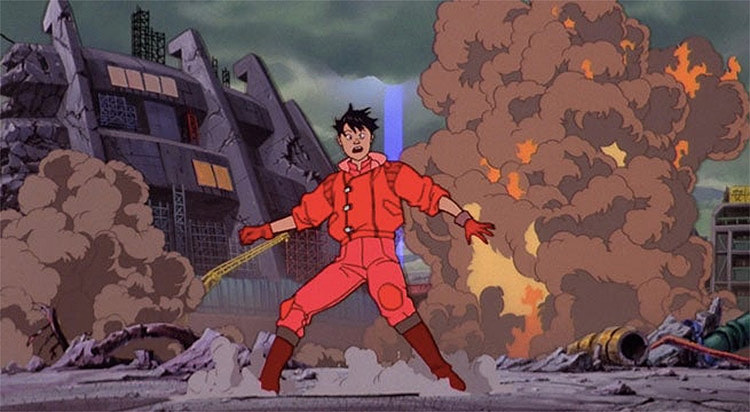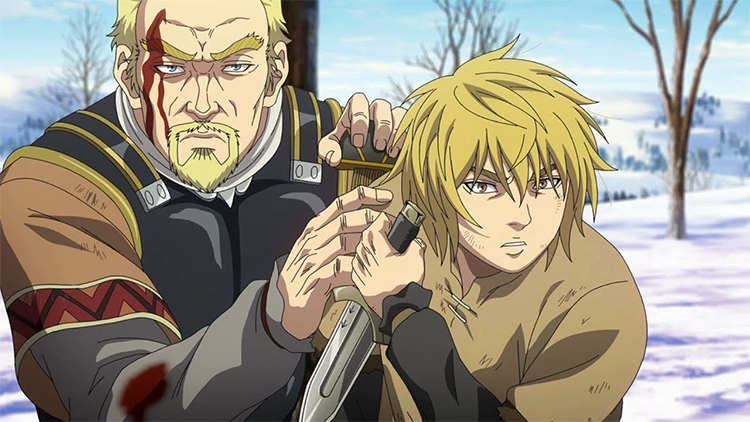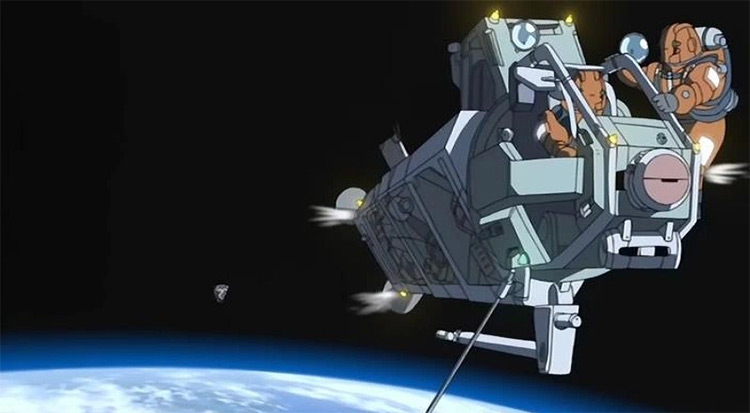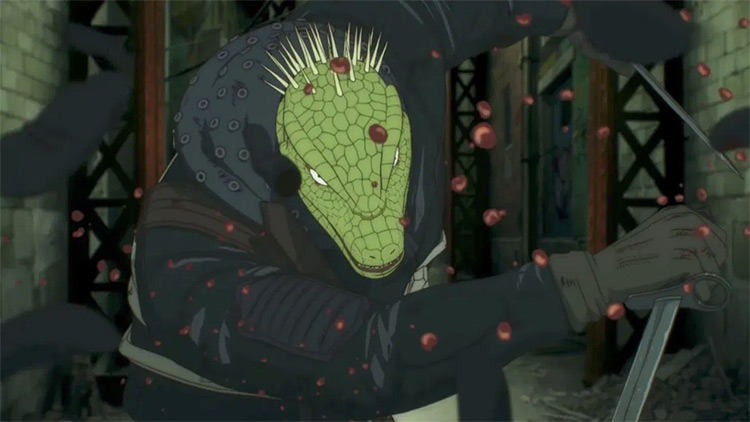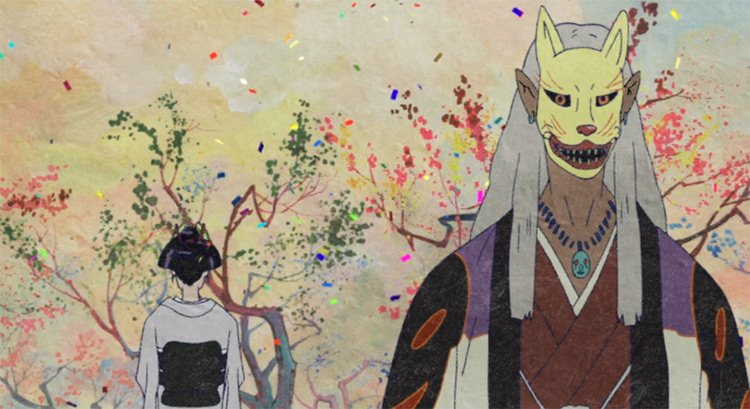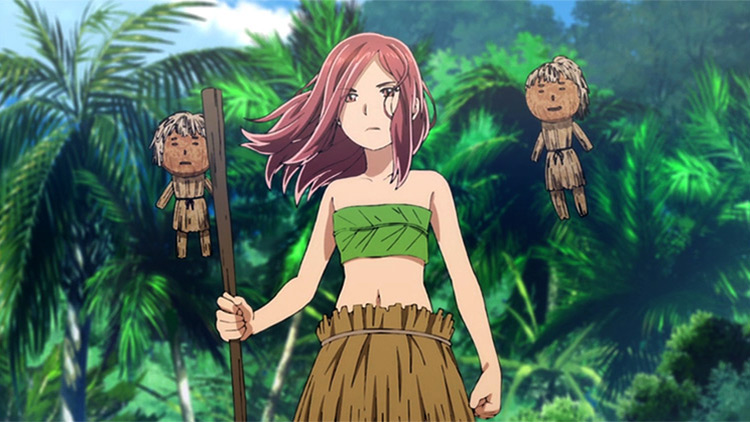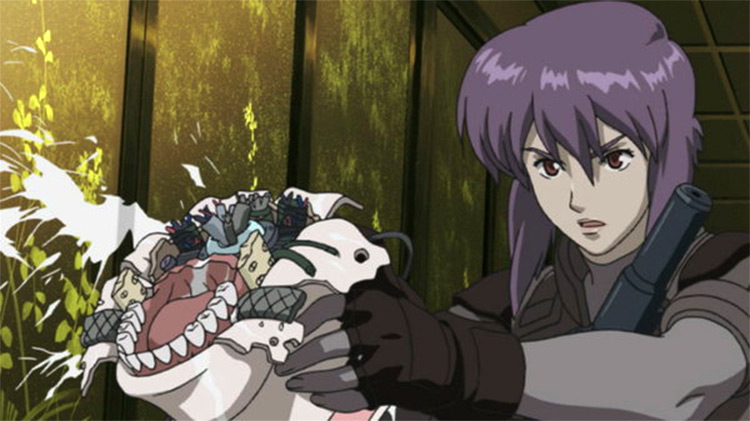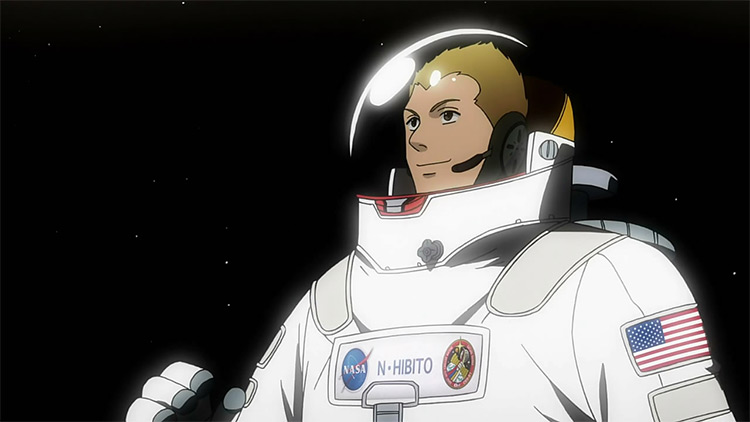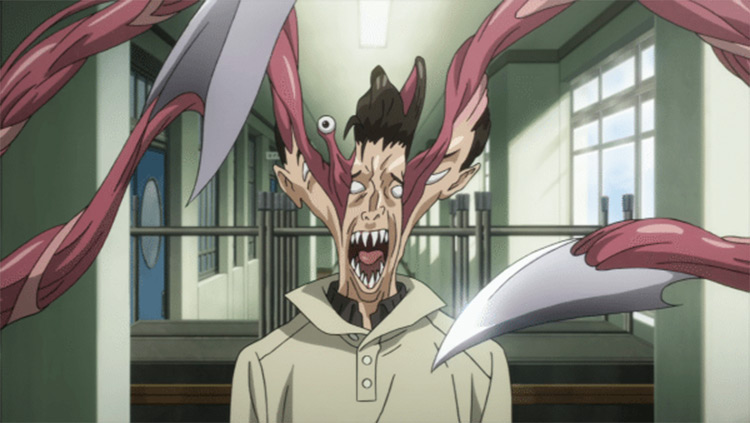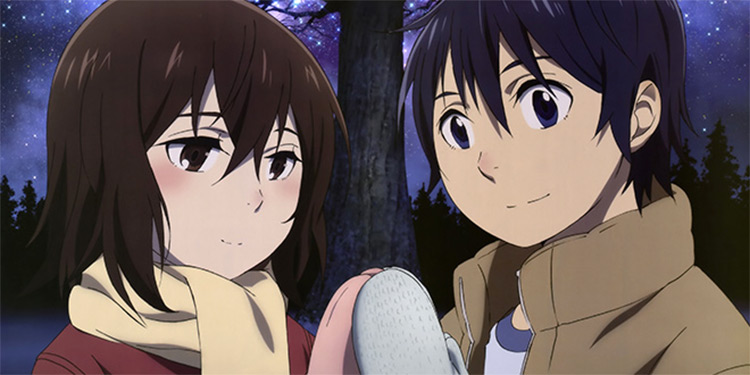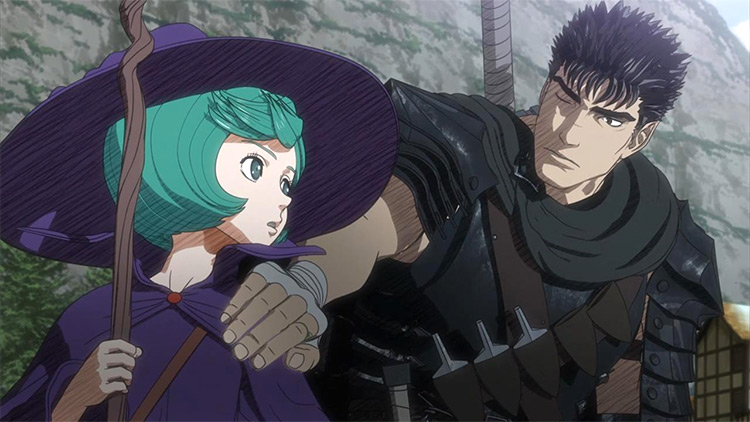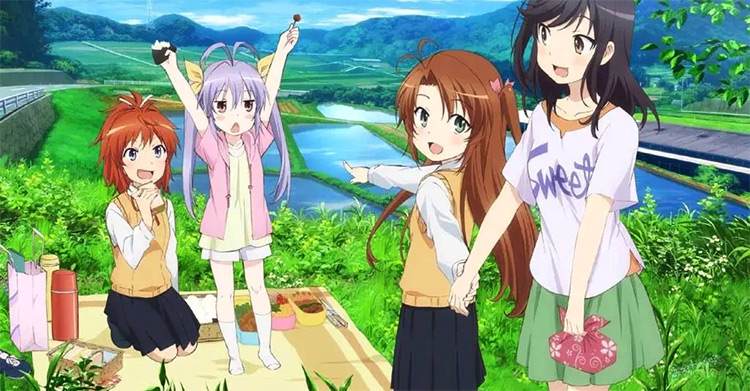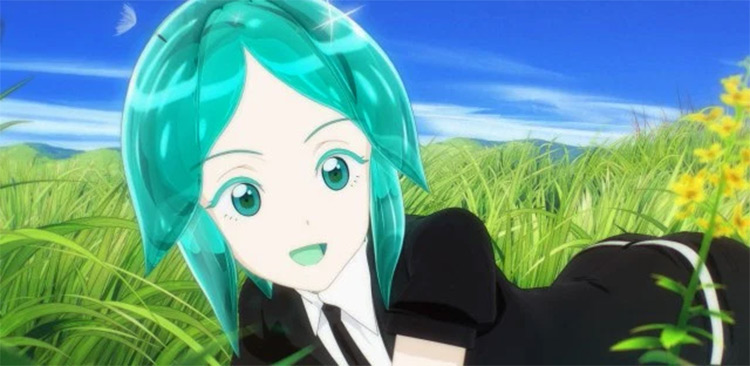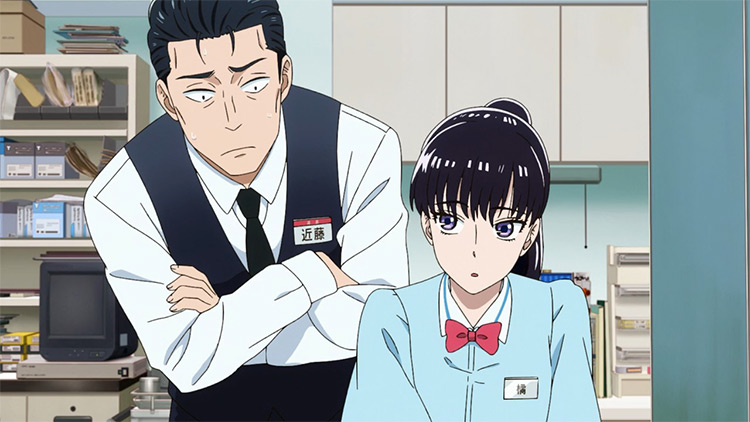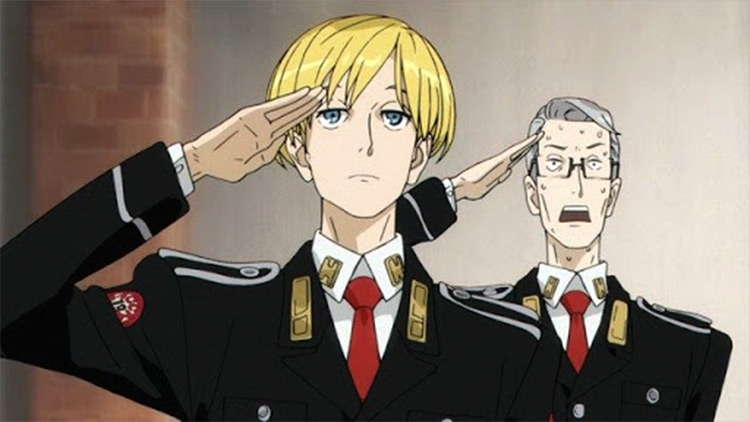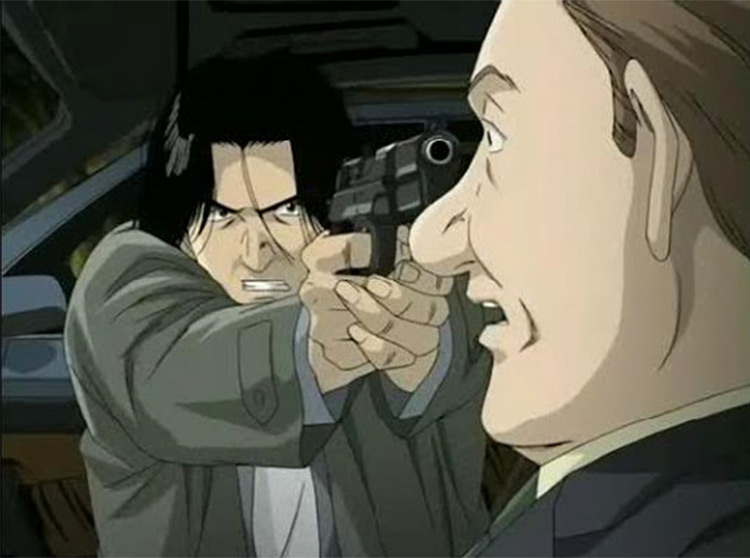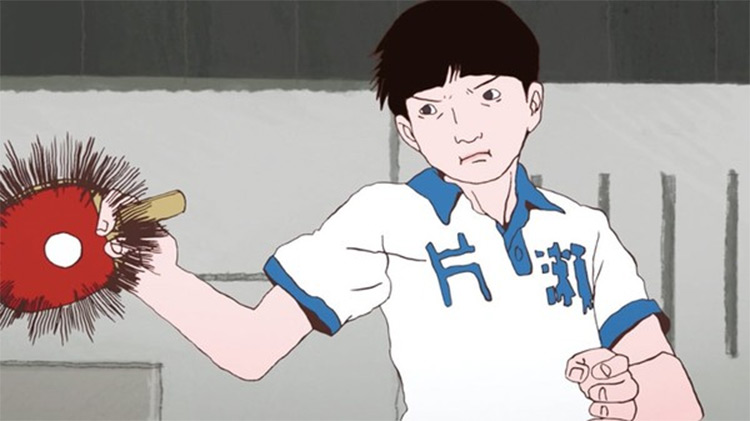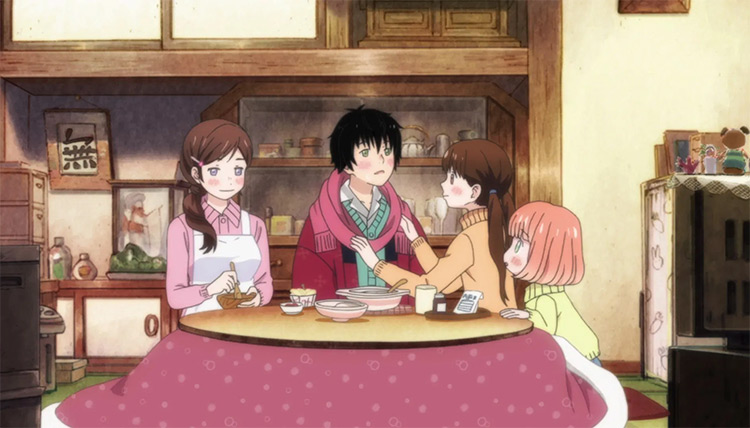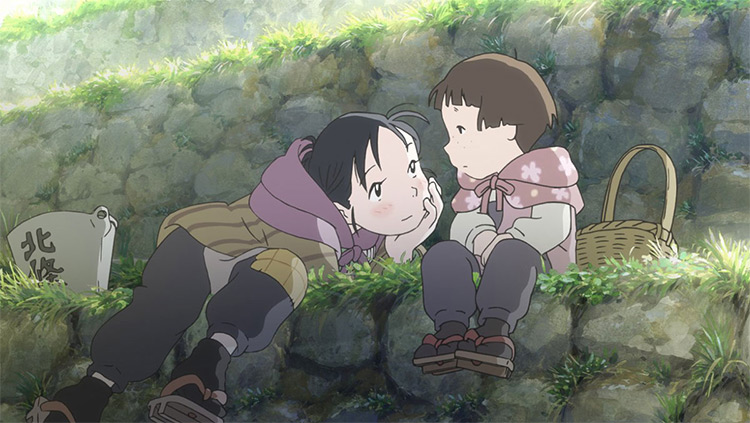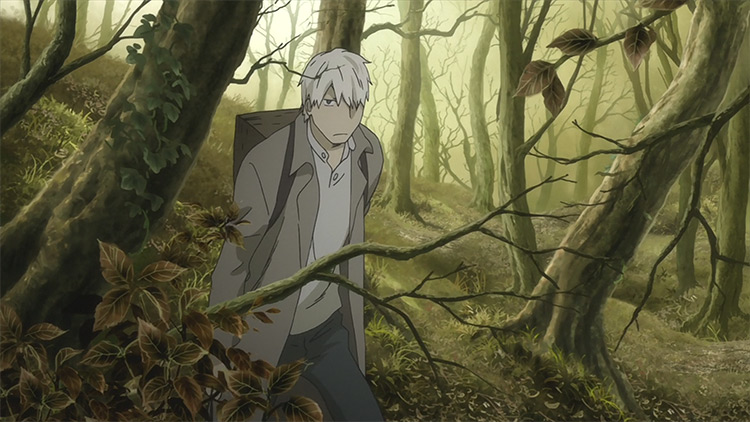You see, seinen is like shounen and josei: While its target viewer would be young adult males (including guys in their late 20s or teens), it can capture older or younger demographics, including women too. Because it has no dominant style or theme, unlike in shounen. So seinen can be a 50-episode introspective, philosophical series, or a single-hour show featuring cute girls doing cute things (which is already also a genre in itself known as CGDCT). So if you’re on the lookout for excellent stories not restricted to a certain pattern, then check out my all-time top seinen picks. You’re bound to find something in here you’ll enjoy.
20. Akira
What else is there to say about Akira? Its lines and scenes are well-known as highly influential in many works, even beyond anime and Japan (I mean, that cool GIF of Kaneda and his red bike on the road is a familiar sight online). It’s no longer the most exciting sci-fi anime out there. But it’s always nice to go back to it and appreciate the vision and execution. Plus, Katsuhiro Otomo’s magnum opus was slated for a re-release in theaters back in April 2020. Just the fact that its 4K remaster was slated for an IMAX release is proof of its lasting legacy.
19. Vinland Saga
Like MAPPA, I have a fondness for Wit Studio for the risks it has taken. They don’t always work out, but I applaud the dedication. Just look at anime it produced: Shingeki no Kyojin, The Ancient Magus’ Bride, Hozuki’s Coolheadedness, and the underrated original anime The Rolling Girls. See, Vinland Saga is an old manga — it’s from 2005. The story is epic. But no studio took on the arduous challenge of adapting it and giving it justice until Wit Studio came along. If you’ve wondered what a Viking story would look like in anime, check this out. Vinland Saga is gorgeously animated, brutal, and hard to put down.
18. Planetes
The award-winning Planetes from Sunrise still feels underrated and under-watched despite its high score on MAL. Or maybe I’m just hoping for a renewed interest in this god-tier sci-fi series. Planetes is a 26-episode anime about people whose working lives center around garbage collection — in space. Yup, it focuses on Ai Tanabe and her peers at the Debris Section of Technora Corporation. It’s set in the year 2075 and humanity has already mastered space travel so well, that waste management becomes a serious issue. From there, it’s not surprising to learn that the sci-fi here is more realistic than anime-esque (i.e. lots of giant robots and overpowered weapons). With its politics and refreshingly mature social (and romantic) relationships, Planetes is a distinct series that seamlessly utilizes the unimaginable expanse of space to capture the follies and greats of humans.
17. Dorohedoro
Yes, I know. Dorohedoro just came out recently — it’s simply a 12-episode anime from 2020. So why rank this here? Because Dorohedoro is exciting not only in story but in its execution. And I think it gives a hint about the future of anime in the context of technology and a growing global audience. See, it’s a MAPPA anime. As I mentioned earlier, that’s a studio willing to take the risks. Second, this has CGI elements that I don’t actually despise. It’s acceptable. And I expect CGI animators refining their craft in the near future. Dorohedoro is a very strange, humorous, and violent show. Its characters are visually odd (just look at the reptilian MC) and the soundtrack is just as peculiar… it’s a mix of slice-of-life-ish happy songs and industrial, abrasive tracks. All in all, I’m just happy it exists. Because it points to a future where great yet unconventional anime will continue to receive (financial and logistical) support.
16. Mononoke
It still amuses me to this day that Mononoke originated from one of the stories of the three-part horror anthology Ayakashi: Japanese Classic Horror, particularly in the third story Bakeneko. This is one of the finest horror shows in anime — and it’s an original story. Essentially, Mononoke has five great distinct stories, all of which involve the Medicine Seller and his exorcism. But don’t think of the Hollywood kind of exorcisms. Mononoke requires the MC to first understand what he’s dealing with, before he can deal with the supernatural entity. It’s a mystery that also dabbles on the ever-lingering questions about existence. All characters are interesting, and you rarely see an anime with a one-of-a-kind visual style like Mononoke. If you’ve never seen it before, this is worth a watch.
15. Hinamatsuri
I didn’t know how much I’d end up loving Hinamatsuri until I was halfway done with it. How can a yakuza guy lead a comedy series featuring supernatural female entities? Granted, that sounds like top comedy material, but here’s the thing: It’s not enough for a series to put two characters with different backgrounds together, especially with a show like Hinamatsuri that doesn’t rely on an overarching plot-driven narrative. A show needs compelling personalities and character development — and this anime has both in spades. I’m not particularly fond of Hina, but her friends Hitomi Mishima and Anzu make Hinamatsuri a treasure. I do love the humor here too (one scene involving a surprise had me in stitches), but it’s the daily struggles of the two girls that deserve the most praise: They highlight not only the value of working hard, but also of knowing what you’re working for in the first place. And why we must all be kinder to one another, especially to the less fortunate.
14. Koukaku Kidoutai (Ghost in the Shell)
Ghost in the Shell needs to be on my list. Granted, I was very young when I first witnessed its dystopian technological glory. But I’ve seen it many times since then, at ages where I’m more aware of its themes. Mamoru Oshii stumbled upon amazing source material and gave it justice. And I applaud the risks he took, like making it feel darker and not focusing much on the manga’s humor and nudity. If anything else, Ghost in the Shell proves why hand-drawn or 2D animation is magical. And that 3DCGI can’t and won’t ever fully replicate its essence. Also, Kenji Kawai’s music is nothing short of majestic.
13. Uchuu Kyoudai (Space Brothers)
Space Brothers is a 99-episode (yes, you read that right) series from A-1 Pictures about… well, two bros who had dreams of being astronauts when they were kids. One brother is already close to achieving it, while the older brother took on a different path in his adult life. But then came an opportunity to realize his dream once more, and so we have Space Brothers. The series does have moments in space. But it’s also a realistic portrayal of human struggles. Of the long and sometimes painful journey to achieving your goals. It’s about getting back up when you’ve suffered defeat time and again. Don’t let the number of episodes intimidate you. It’s a drama slice-of-life anime with some of the finest character developments in the medium. Space Brothers will always be inspiring and motivational.
12. Kiseijuu: Sei no Kakuritsu (Parasyte -the maxim-)
Parasyte -the maxim- could very well have been a full-on shoujo, given its exciting on-screen action and how our MC goes through drastic development after the first half. But it does feel more mature than your average shounen. Not only because of the people it kills (and how they are killed) but also because of its philosophical inquiries. Migi is a parasitic alien. But the hilarious entity isn’t just there to give Shinichi powerful new abilities, nor to pave the way for some hilarious moments. Similarly, some of the villains aren’t created to merely serve as our hero’s foes. They have genuine goals that drive their action — or at least lead to introspection. Parasyte -the maxim- left me satisfied because it was a complete story. And I applaud Madhouse for its dedication to and treatment of the source material, a manga first released in 1989.
11. Boku dake ga Inai Machi (ERASED)
ERASED is no longer part of the conversation (or memes) these days. But there was a time when the A-1 Pictures adaptation was the talk of the town. And who didn’t want to witness it unfold each week? The anime had time travel, an adorable cast of young friends, and a hype-building OP by none other than Asian Kung-Fu Generation (Naruto, Fullmetal Alchemist). I love how its aspect ratio changes whenever Satoru travels back in time, creating a cinematic feeling. Which effectively makes you appreciate it as a film (divided into 12 episodes) rather than a series. Even with its flaws, I still think ERASED is a 10/10 — an imperfect work of art that’s left me speechless on more than one occasion for its gripping and utterly heartfelt moments.
10. Kenpuu Denki Berserk (Berserk)
Like Akira and Ghost in the Shell, there’s nothing much else for me to say about Berserk. It’s violent and dark. But it’s also one of the best stories ever in manga and anime (too bad the anime is far from a full adaptation). The only tip I’ll give is this: Do not watch the 2016 CGI adaptation. It’s honestly blasphemy to the source material that it even got a second season. Instead, stick to the 25-episode adaptation by OLM. The animation hasn’t aged well, so the action isn’t as epic as it felt back then. But the sheer scale of conflict and political clashes between Guts and Griffith remains rich and worth examining.
9. Non Non Biyori
Non Non Biyori is one of my all-time favorite anime, regardless of genre — and I didn’t even think it was going to be that special. You see, what motivated me to finally watch the CGDCT series was Tanaka-kun is Always Listless, a much more recent Silver Link production. I loved that series and I wanted to see if the studio had more to offer in the same vein. Non Non Biyori differs in visual style and setting (a rural, agricultural village). But the soothing feeling you only really get from top-tier slice-of-life anime is also present. Yes, it’s just about young girls living their daily lives (and studying at a school with only five students). But Silver Link was impeccable here: The studio offered serene landscapes, accompanied by natural sounds and summer-esque instrumentals, to be the focus of a scene as if they were characters themselves. It’s in the quiet moments (experienced by characters and viewers alike) where Non Non Biyori truly shines. I can’t wait for the third season.
8. Houseki no Kuni (Land of the Lustrous)
All hail CGI — well, at least CGI done right and mixed flawlessly with 2D animation. To say that Land of the Lustrous raised the bar for CGI-heavy anime is an understatement. The 2016 adaptation of Berserk should drop to its knees and repent to the shiny-haired crystal entities of Houseki no Kuni. Even Knights of Sidonia, which previously set the standard for CGI series, can learn from this visually stunning anime. But apart from its cinematic flair (both in sight and sound), Land of the Lustrous has a brilliant story with well-developed & well-designed characters — and it does so many things right in 12 episodes. I know it’s surprising to see this anywhere in the top 10 given it’s a 2017 anime. But it doesn’t have major issues at all. Props to Studio Orange for their outstanding adaptation that will surely get more attention & praise in the coming years.
7. Koi wa Ameagari no You ni (After the Rain)
I know this will definitely shock many readers. Yes, Wit Studio’s adaptation of After the Rain deserves this spot. Maybe you’re questioning why I’d put something that looks like romantic exploitation on my list. But that’s the thing: this isn’t an anime about a 45-year-old man and a high schooler falling for each other. In reality, After the Rain is about losing your passion and just watching life pass by — and then finding a reason to truly live your life again in the unlikeliest of settings and conversations. After the Rain should resonate with many people, particularly those fond of seinen. How can it not when it skillfully ruminates on midlife crises? On how growing old changes people and their capacities, and the dreams and anxieties of youth? If you liked ReLIFE and other similar titles, give this a chance. It’s more than what the premise and poster suggest.
6. ACCA: 13-ku Kansatsu-ka (ACCA: 13-Territory Inspection Dept.)
ACCA being in No. 6 will offend or disappoint many people, but it’s one of my highlights of 2017, and I wasn’t even expecting anything out of it. It was the first anime season of the year (Winter), and I saw that Madhouse had an entry: ACCA. It didn’t have any hype for it, at least on the online forums I frequent. But this anime enthralled me: ACCA had a classic appeal to it, far away from the big-eyed moe and vibrant look of many modern anime. It’s like the series didn’t have to rush its story. Just unfolding at the right time. Everything about ACCA is seamless, right from its opening theme to the final seconds of the ED. There is no disconnect in mood and aesthetic choice. Jean Otus is hands down one of my favorite male MCs ever. And he capably leads viewers to his journey in this mystery police drama featuring jazz music, giant food (that will put extra-large meals to shame), and lots of cigarette smoking.
5. Monster
Back in 2004, Madhouse released Monster. I was intrigued by the title, but it’s only after I gave it another viewing many years later that I came to truly love the series. Monster is a psychological investigative thriller. And you can sense this just by its subdued colors and the odd character design. This is a genuinely serious, brutal series. And not just because of its gruesome scenes. The anime is horrifying because it knows that violence can be only physical, but also psychological. Monster acknowledges the good and evil (and morally grey areas) of humanity. That people are capable of being kind yet unforgiving, loving yet despicable. Moreover, its world isn’t bright and charming: Like reality, it’s not lacking in cruelty and corruption. The series will eventually feel slow, but trust me when I say that it’s timing will make sense. Monster is a difficult puzzle. But you’ll be grateful you stayed to find and fit all the pieces together, and you’ll likely give it a second (or third) viewing to admire how the show built up its mystery and its complex characters.
4. Ping Pong the Animation
Easily my favorite Masaaki Yuasa project (even compared to The Tatami Galaxy and Devilman Crybaby), Ping Pong the Animation was a pleasant surprise from the relatively unknown Tatsunoko Production. I remember it came out in 2014 because while Zankou no Terror won a community poll for anime of the year, it was Ping Pong the Animation that won the prestigious Animation of the Year Award at the Tokyo Anime Award Festival. I was initially annoyed at this show for beating Watanaeb’s cinematic original anime. Then I saw it not just once, but twice (and I’m planning a third one), and I couldn’t deny its brilliance. Ping Pong the Animation does look odd. Some will say its animation is terrible. But its aesthetics do grow on you, and some of its visuals become stellar when combined with the music of Kensuke Ushio (who worked on A Silent Voice and Devilman Crybaby too). More than that, Ping Pong the Animation is an outstanding example of character writing and storytelling, developing its individuals and their relationships with each other masterfully and naturally. No dialogue is filler. And you can’t help but root for all of them by the end.
3. 3-gatsu no Lion (March Comes in Like a Lion)
Just when you thought Shaft will forever be known as that Monogatari franchise studio, then comes this two-season adaptation that proves the studio can create other modern masterpieces. Debuting back in 2016, March Comes in Like a Lion was (unsurprisingly) visually immersive. But unlike the Monogatari shows, this one felt more subtle, softer, and delicate — and this was an informed decision. The MC, Rei Kiriyama is a young highly skilled shogi player (you don’t need to know the game, it’s just a way to highlight other issues). Rei faces harsh depression, among other things. And unlike other shows (including non-anime and American series) this anime delves into mental health appropriately. That’s not to say March Comes in Like a Lion is a show only about depression. No, far from it. Through its many characters (and I say “many” because its supporting cast feels real due to their own complexities), viewers can better understand issues like bullying, aging, sickness, and how these problems shape and affect people differently. Shaft found a way to visualize how its characters feel and think. And it’s just remarkable how the anime gives different perspectives. Also, the music is equally stunning. March Comes in Like a Lion will make you laugh, cry, angry, and be more sensitive to others. To not only have sympathy but also perhaps empathy. Season 1 is already stunning, but Season 2 is what cemented its status as a modern anime classic.
2. Kono Sekai no Katasumi ni (In This Corner of the World)
Remember 2016? That was the best year for anime movies last decade. Makoto Shinkai’s Your Name broke box office records around the world. Then Kyoto Animation and Director Naoko Yamada had the softer yet similarly emotional A Silent Voice — and Shaft released the first two parts of the Kizumonogatari trilogy. Still, it was MAPPA’s crowdfunded masterpiece that is “In This Corner of the World” that felt to be the most important film of that glorious year, because of its historical and sociopolitical significance. The trailer alone, featuring Kotringo’s soft yet painful track Kanashikute Yarikirenai (translated as “I Can’t Bear How Sad It Is”) was heartbreaking. Yet had a tinge of hope and perseverance. This is a beautiful, harrowing fiction based on real stories of the horrors of war. Of innocent lives forever changed and lost. Of people and their families caught in the political strife among entire countries.
1. Mushishi
Amusingly, the most similar entry to my No. 1 seinen anime is the adorable Non Non Biyori. What does Renge’s laidback world have in common with the supernatural Mushishi, you say? For one, Mushishi has a lot of content: It has three seasons (46 episodes all in all), two 45-minute specials, and a movie — and they’re all great. Second, Mushishi never fails to calm my mind. And dare I say it, calm my soul. Like Non Non Biyori, it’s not afraid of silence or moments of reflection. Third, it’s a story about life and how we can appreciate or understand it in different ways. That there is no absolute path to a “perfect life” because people value different things (and value them according to their own criteria). Mushishi is a classic seinen anime. And I’m just glad to be born at a time where such a masterpiece exists.
